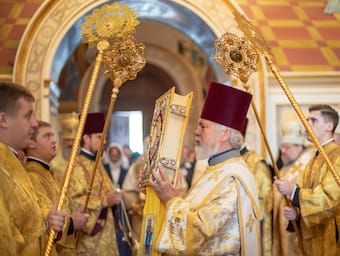Comfortable Words lays out the complete text of the Authorized or King James Version of the Bible, published in 1611. You will also find a varied collection of prayers and hymns in a similar kind of ‘Church English’.
“On your bookshelves at home you will have something to supplement any anthology. Open your Bible at the Acts of the Apostles if you want straightforward accounts.”
NL Clay, Straightforward English (1949)
Twenty-First Sunday after Pentecost
Sunday November 17 NS November 4 OS
St Joannicius of Bithynia (834),
St Birnstan of Winchester (?934)
Sunday November 17 NS November 4 OS
Today is
November 8
OS
November 21
NS
Now we exhort you, brethren, warn them that are unruly, comfort the feebleminded, support the weak, be patient toward all men.
15 See that none render evil for evil unto any man; but ever follow that which is good, both among yourselves, and to all men.
16 Rejoice evermore.
17 Pray without ceasing.
18 In every thing give thanks: for this is the will of God in Christ Jesus concerning you.









